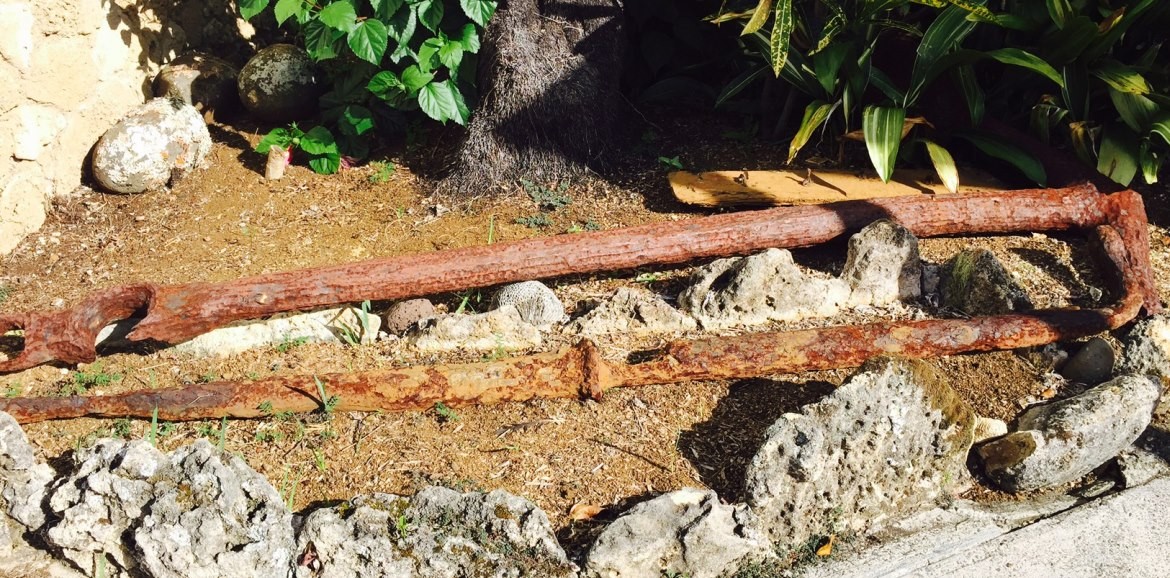The “Sirius”, flagship of the first fleet that arrived in Botany Bay in January 1788, was the main supply ship for the fledgling colony and its companion settlement on Norfolk Island. Those first few years were extremely hard as everything had to be established from scratch and there were many mouths to feed. The colony in Sydney Cove really struggled and was more and more dependent on the ability of the Norfolk Island settlement to provide fresh meat and vegetables via the ever reliable “Sirius”.
In March 1790 the Sirius arrived off Norfolk Island, filled with supplies, several hundred convicts, freedmen and soldiers, most of whom were en route to Sydney from England. The Sirius therefore is important in Australian and Norfolk Island history.
Apparently the weather was fine and the seas calm, so they anchored off Kingston and a small party went ashore. Unfortunately, no allowance was made for the tricky currents beyond the reef, and seemingly without warning, this critical supply vessel ran aground on the limestone reef of Slaughter Bay.
All of the passengers and crew were brought ashore safely, but the long awaited mail, livestock, luggage and supplies of seeds, tools and foodstuffs were still on board. Two convicts volunteered to swim to the ship and throw everything overboard so the livestock could swim to shore and the other items might be washed in by the tide. They did a fine job until they discovered the rum supplies, whereupon they drank their fill and during their drunken capering, they set the ship alight. On seeing the smoke, cannons were fired to order the men back to shore, but it wasn’t until another convict swam out to the ship that the fire was put out and the two culprits were brought back to shore where they were summarily clapped in irons!
Most of the livestock and many of the supplies were salvaged, but the heavier items and some of the luggage went straight to the bottom. The “Sirius” didn’t break up and submerge for another two years and a causeway of stones was constructed from the shore to the wreck to continue salvaging items at low tide. This causeway is still visible at very low tides.
As a result of the “Sirius” foundering on the reef, Sydney Cove’s population almost starved and the much smaller “Supply” had to be dispatched to Capetown to bring back provisions. Norfolk’s population grew from 150 to 500 overnight and food supplies became incredibly short within a couple of months. They resorted to eating the petrels that were nesting in the roots of the pines on Mount Pitt and Mount Bates. These placid birds had migrated to Norfolk Island for thousands of years and knowing no previous competition, had no defense mechanisms, so were slaughtered in their hundreds of thousands. They were given the name Providence Petrels, by the grateful settlers, but in reality their fate was sealed and the petrel has never returned to Norfolk to nest and raise their young.
You can learn more about the “Sirius” and the story of the maritime archaeological project that discovered her remains beyond the reef, at the Norfolk Island Museum in Bounty Street, Kingston.
Closer to hand though, you can admire what might be one of her anchors, here in the gardens of Castaway Norfolk Island. It was the mistaken placement of this anchor that resulted in the loss and mayhem that had such a profound effect on Norfolk’s human and natural history.
How the anchor came to be stored at Castaway is still a mystery, but Mr P. H. Metcalfe, who lived on Norfolk Island in the late 1800s, on this site, was an avid collector of bird species, and may also have collected this valuable artefact from the first convict settlement.

